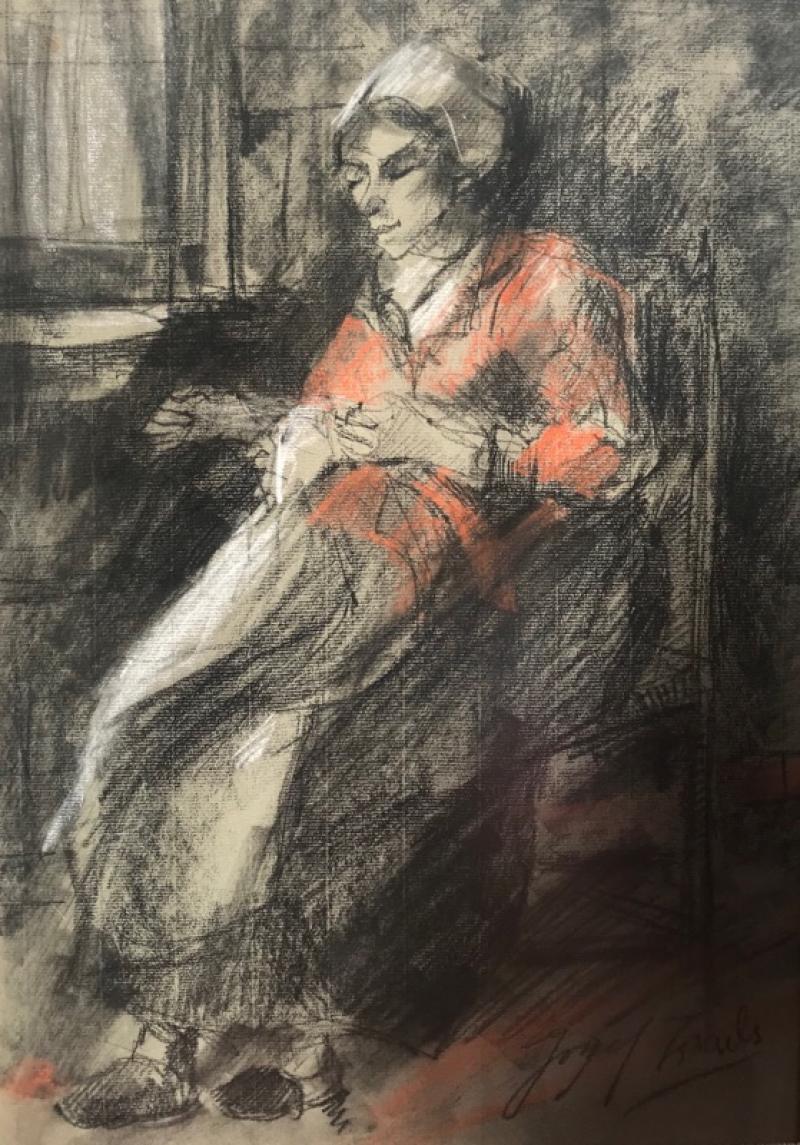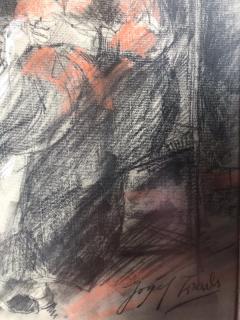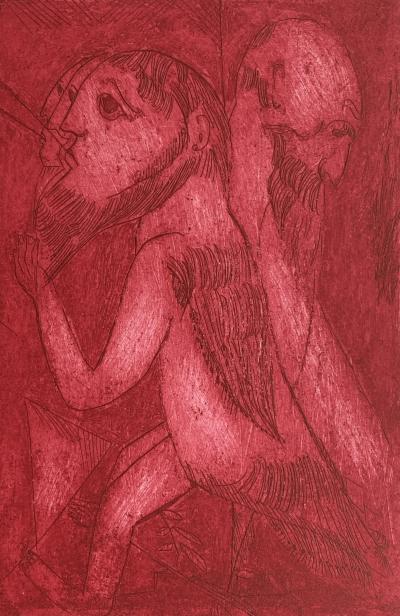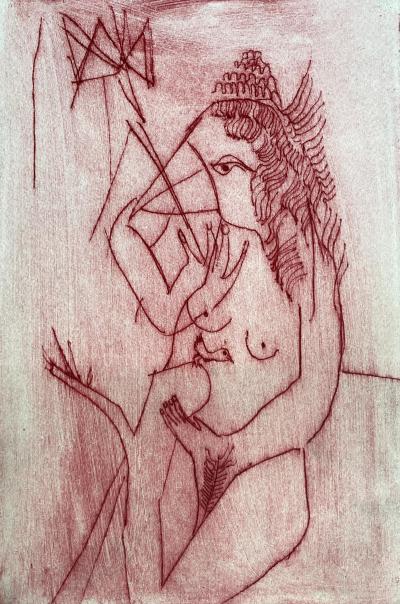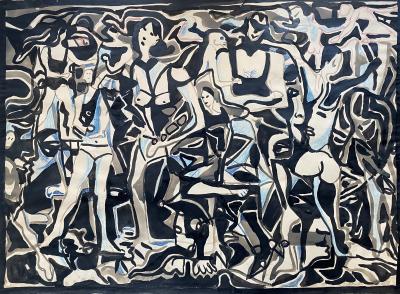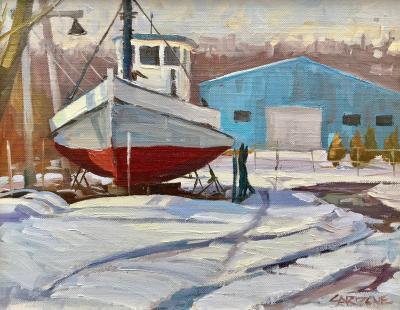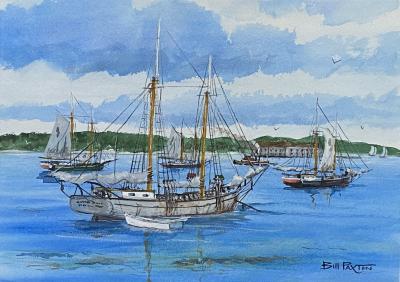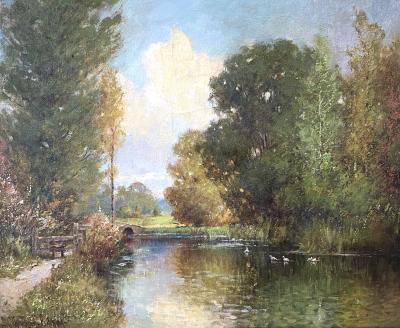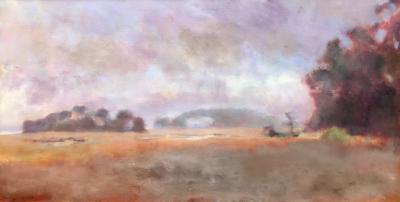“Woman Mending”
-
Description
Charcoal and oil pastel on paper of a woman mending by the famous Dutch artist, Josef Israels. In very good condition with no issues. Signed lower right. Circa 1890. Framed in a more recent antique silver frame with silk mat also in very good condition. Framed with museum glass. Provenance: Sarasota, Florida estate.
Jozef Israels was a Dutch painter and a leading member of the group of landscape painters referred to as the Hague School and, during his life time, "the most respected Dutch artist of the second half of the nineteenth century".
Born in Groningen, Holland, in 1824, Josef Israels was brought up in the traditions of the Jewish faith and destined for the rabbinate. His interest in drawing grew stronger with age however, and in 1840 his father finally relented, sending him to Amsterdam. There he spent his days working in the studio of Jan Kruseman and his evenings painting at the Royal Academy under Jan Pieneman, both leading portrait painters. In Paris, Israels studied a short time with the historical painter Francois Picot and also at the Ecole des Beaux-Arts.
It was however, the humble fisher-folk of Zandboort, a remote village on the northern coast of Holland, who determined the direction of his art. There, in 1855, he observed their daily routine, their natural, simple existence, with its sorrows and terrors and little joys, all unspoiled by the requirements of society. His eyes were opened to the beauty of real life and he came to see its drama was well worth depicting.
Of his style and the influence of Rembrandt the artist stated: "I began to realize that true art does not consist in smoothly finished drawing and scrupulously exact coloration. I perceived that I had to occupy myself much more with the correct appreciation of light and shade, with the attitudes and movements of beings and thing… In Rembrandt alone did I find that breadth and freedom of execution which was lacking in all the others."
In 1870 Israels became one of a number of artists taking up residence at The Hague, which, like Paris, became a center to which painters flocked. He was to become the acknowledged leader of The Hague School, which took the art of Holland to its highest point since the 17th century.
The artist won many honors; the Cross of the French Legion of Honor, a Chevalier of the Order of Leopold and even a medal at Philadelphia, but what he treasured most was the affection and admiration of his fellow countrymen who acknowledged him as a true interpreter of the Dutch character and spirit. -
More Information
Documentation: Signed Origin: Netherlands Period: 19th Century Materials: Charcoal and oil pastel on paper Condition: Very good Creation Date: Circa 1890 Styles / Movements: Impressionism Incollect Reference #: 339641 -
Dimensions
W. 12 in; H. 16.5 in; D. 1.75 in; W. 30.48 cm; H. 41.91 cm; D. 4.45 cm;
Message from Seller:
Arthur T. Kalaher Fine Art, located in Southampton, NY, offers a curated selection of traditional and contemporary works, including pieces by the Peconic Bay Impressionists and the estate of Nahum Tschacbasov. For inquiries, contact 631.204.0383 or visit arthurkalaherfineart.com.















